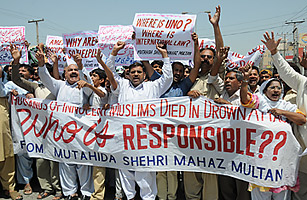
For the past six weeks, Pakistan has echoed with ferocious opposition to the CIA’s covert drones program that targets al-Qaeda and Taliban militants hiding in the tribal areas along the Afghan border. Ever since Pakistan’s army chief General Ashfaq Parvez Kayani issued a rare and fiercely worded condemnation of a March 17 drone strike, his criticism of the U.S. has been repeated by the prime minister, opposition politicians, and media commentators alike. And in that time, the CIA has fired only two drone more strikes, breaking a pattern of around a dozen a month.
The latest drone strike happened on Friday, on the heels of U.S. Chairman of the Joint Chiefs, Admiral Mike Mullen and U.S. Army Chief Gen. Martin Dempsey’s visits to Pakistan. Top American and Pakistani military, intelligence and government officials have been trying to calm the tensions between the allies through meetings in Washington and Islamabad. But little progress has been made: Prime Minister Yousaf Raza Gilani continues to call for the drones to stop, as Friday’s strike killed 25 people, including four women and five children, according to Pakistani officials. The reasons for Pakistan’s sudden decision to end seven years of either tolerating or silently approving of the drones program remain unclear, raising questions about the nature of its current vehement complaint.